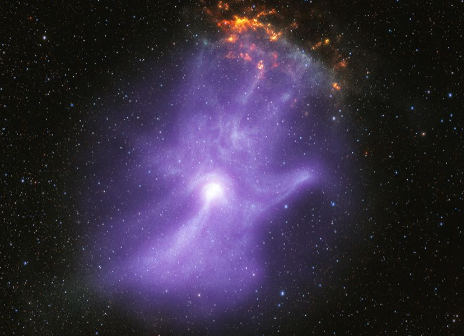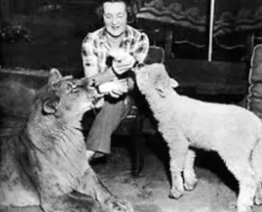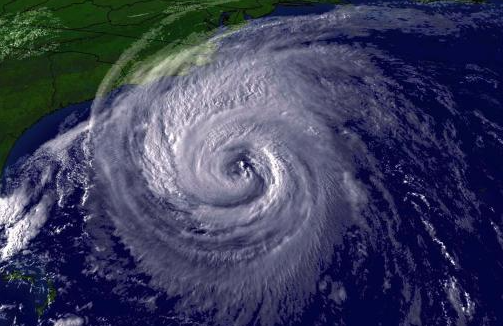The science behind NASA’s ‘ghost hand’ image
MSH 15-52, which is located 16,000 light-years from Earth, was first observed by NASA's Chandra X-ray Observatory in 2001.
MSH 15-52는 지구에서 16,000광년 떨어진 곳에 위치해 있으며 2001년 NASA의 Chandra X선 관측소에서 처음으로 관측되었습니다 .
Just as doctors use X-rays to study anatomy, astronomers have targeted a pulsar to learn how its magnetic field affects the nebula around it.
의사들이 해부학을 연구하기 위해 엑스레이를 사용하는 것처럼, 천문학자들은 펄서의 자기장이 주변 성운에 어떻게 영향을 미치는지 알아보기 위해 펄서를 목표로 삼았습니다.
* nebula - 성운(星雲)
But all is not as it appears. This skeletal hand is actually the glowing gas of a pulsar wind nebula. This nebula, energized by the super-hot, super-magnetic remnant of a star that exploded some 1,500 years ago. And it’s the spooky subject of a combined effort between NASA’s Chandra X-ray Observatory and Imaging X-ray Polarimetry Explorer (IXPE).
그러나 모든 것이 보이는 것과 다릅니다. 이 뼈대손은 실제로 펄서풍 성운의 빛나는 가스입니다 . 이 성운은 약 1,500년 전에 폭발한 별의 초고온, 초자기 잔해에 의해 활성화되었습니다. 그리고 이는 NASA의 Chandra X-ray Observatory와 Imaging X-ray Polarimetry Explorer(IXPE)가 공동으로 노력한 으스스한 주제입니다.
* pulsar - 펄서(눈에 보이지는 않지만 주기적으로 빠른 전파나 방사선을 방출하는 천체)
IXPE is a unique instrument designed to help astronomers untangle the workings of magnetic fields. The telescope observes the polarization, or orientation, of magnetic fields, which can reveal how magnetic fields are interacting with the material around them.
IXPE는 천문학자들이 자기장의 작용을 풀 수 있도록 돕기 위해 설계된 독특한 도구입니다. 망원경은 자기장의 편극 또는 방향을 관찰하여 자기장이 주변 물질과 어떻게 상호 작용하는지를 밝힐 수 있습니다.
Located some 16,000 light-years away, this is pulsar PSR B1509-58 and its associated wind nebula, cataloged separately as MSH 15-52. When a massive star dies in a supernova explosion, it can leave behind a neutron star: a city-sized, rapidly rotating ball of neutrons with a powerful magnetic field. As the star, called a pulsar, rotates, it shoots out beams of both matter and antimatter from its poles, like a cosmic particle accelerator. These beams sweep through the gas left behind from the explosion, lighting it up as a pulsar wind nebula.
약 16,000광년 거리에 위치한 이 성운은 펄서 PSR B1509-58과 관련 바람 성운으로 MSH 15-52로 별도로 분류됩니다. 거대한 별이 초신성 폭발로 죽으면 중성자별이 남을 수 있습니다. 이는 도시 크기의 강력한 자기장을 갖고 빠르게 회전하는 중성자 공입니다. 펄서라고 불리는 별이 회전하면서 우주 입자 가속기처럼 극에서 물질과 반물질의 광선을 발사합니다. 이 광선은 폭발로 인해 남겨진 가스를 휩쓸어 펄서풍 성운으로 빛나게 합니다.
* supernova - 초신성(보통 신성보다 1만 배 이상의 빛을 내는 신성)
* neutron - 중성자

The "ghostly hand" — formally known as MSH 15-52 — was created by the the death of a massive star. This catastrophic event, called a supernova explosion, left behind a fast-spinning, superdense stellar corpse known as a pulsar.
공식적으로 MSH 15-52로 알려진 "유령의 손"은 거대한 별의 죽음으로 인해 만들어졌습니다. 초신성 폭발 이라고 불리는 이 대이변적 사건은 펄서라고 알려진 빠르게 회전하는 초밀도 항성 시체를 남겼습니다 .
* superdense - 초고밀도
Pulsars are rotating neutron stars that have strong magnetic fields, which create powerful jets of charged particles and intense wind that forms what is known as a pulsar wind nebula. The pulsar PSR B1509-58 is located near the center of the image — or the base of the palm of MSH 15-52 — and injects particles into space, creating a glowing shape that resembles a human hand, according to a statement from NASA.
펄서는 강력한 자기장을 갖고 회전하는 중성자별로, 펄서풍 성운으로 알려진 것을 형성하는 강력한 하전 입자 제트와 강렬한 바람을 생성합니다. NASA의 성명에 따르면 펄서 PSR B1509-58은 이미지 중앙 즉, MSH 15-52의 손바닥 바닥 근처에 위치하며 입자를 공간에 주입하여 인간의 손과 유사한 빛나는 모양을 만듭니다.
In this case, highly polarized magnetic fields stream away from the neutron star to the upper right, creating the “bones” of the hand as particles stream away from the pulsar and glow in X-rays. A high level of polarization means the magnetic field lines are oriented straight in space.
이 경우, 고도로 극성화된 자기장이 중성자별에서 오른쪽 상단으로 흘러가면서 입자가 펄서에서 멀어지고 X선으로 빛나면서 손의 "뼈"가 생성됩니다. 높은 수준의 분극은 자기장 선이 공간에서 직선 방향을 향하고 있음을 의미합니다.
The same is not true at the base of the ‘ghost hand’ — there, the jet from the pulsar shows low polarization near the neutron star, then the magnetic field seems to straighten out farther from the star (to the lower left). Astronomers take this to mean the region near the pulsar is quite turbulent as it spews out energetic particles, then grows calmer and more ordered farther away.
'유령 손' 바닥에서 펄서의 제트는 중성자별 근처에서 낮은 분극을 보여주고 자기장은 별에서 더 멀리(왼쪽 아래) 펴지는 것처럼 보입니다. 천문학자들은 이것을 펄서 근처 지역이 에너지 입자를 분출하면서 매우 격동적이며, 멀어질수록 차분해지고 질서가 잡힌다는 의미로 받아들입니다.

























